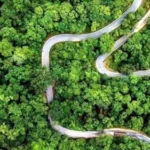Bandipur National Park, one of India’s oldest and most beloved wildlife sanctuaries, is an enchanting destination nestled in the heart of Karnataka. Spanning 874 square kilometers, this rich ecological zone is home to an extraordinary array of flora and fauna, including elephants, tigers, leopards, and an abundance of bird species. Bandipur offers a unique blend of biodiversity and natural beauty, drawing nature lovers, wildlife photographers, and travelers from across the world.
Choosing the right time to visit Bandipur is crucial to making the most of your experience. From seasonal weather patterns to animal sightings, every detail matters when planning a trip to this stunning wildlife haven. Here’s a comprehensive guide on the best time to explore Bandipur National Park and all it has to offer.

Bandipur’s Seasonal Charms
The climate at Bandipur National Park is generally pleasant, but the experience varies greatly with each season. The park has three distinct seasons: winter, summer, and monsoon, each bringing its own flavor to the forest.
Winter (October to February)
Highlights: Pleasant Weather, Abundant Animal Sightings
Winter is widely regarded as the best season to visit Bandipur National Park. From October to February, the weather is cool and comfortable, with daytime temperatures averaging between 10°C and 25°C. This makes exploring the forest enjoyable, especially for those who want to embark on multiple safaris without feeling fatigued by the heat.
Winter also brings increased chances of animal sightings, particularly during early morning and late afternoon safaris. Animals are more active in the cooler hours, and the dry landscape allows for unobstructed views, making it easier to spot species like elephants, gaur (Indian bison), and various deer. The park’s birds are also active during winter, so birdwatchers will find this season ideal for capturing shots of species like the Malabar grey hornbill, crested serpent eagle, and Indian roller.
Additionally, the winter months see fewer rains, reducing the risk of unexpected safari cancellations due to bad weather. Overall, if you’re looking for the best combination of pleasant weather and wildlife activity, winter is the perfect time to visit Bandipur.
Summer (March to June)
Highlights: Excellent for Tiger Sightings, Fewer Crowds
Summer at Bandipur National Park is hot and dry, with temperatures often soaring above 35°C. While the heat can be intense, summer is an excellent time for serious wildlife enthusiasts, particularly those hoping to see Bandipur’s elusive tigers. During these dry months, water sources become scarce, forcing animals to congregate around the park’s lakes, ponds, and man-made watering holes. This makes it easier to spot wildlife, as animals come to these locations to quench their thirst.
If you’re keen on spotting large predators like tigers and leopards, summer is your best bet. Early mornings and late afternoons are the ideal safari times, as animals are more active and the temperatures are relatively cooler. Summer also brings fewer tourists, so the park is quieter, and the safaris can feel more immersive without large crowds.
However, the summer heat can be overwhelming, so it’s essential to prepare with lightweight clothing, sunscreen, hats, and plenty of water. If you’re up for the challenge of enduring the heat, the rewards of summer safaris can be incredibly fulfilling.
Monsoon (July to September)
Highlights: Lush Greenery, Scenic Beauty, Lesser Animal Sightings
The monsoon season transforms Bandipur National Park into a lush, green paradise. Between July and September, the park receives heavy rainfall, rejuvenating the forests and bringing fresh vitality to the landscape. The dense greenery and misty atmosphere give the forest a magical quality, making it a paradise for nature lovers and photographers who wish to capture the forest at its most vibrant.
However, while the monsoon brings scenic beauty, it also presents challenges for wildlife spotting. Animals tend to scatter deeper into the forest during this time, making sightings less frequent. The thick vegetation also provides ample cover, so spotting species like tigers and leopards can be more challenging. Additionally, the rain can lead to muddy trails, and safaris may be canceled due to weather conditions.
For travelers who are more interested in scenic beauty and less focused on frequent animal sightings, the monsoon season offers a peaceful, serene experience in Bandipur. However, if spotting wildlife is a priority, it’s best to visit outside of the monsoon months.
Choosing the Right Time of Day for Safari
Beyond picking the season, choosing the right time of day for your safari can make a significant difference in your experience.
Early Morning Safaris
Morning safaris, usually starting around 6:30 a.m., are ideal for those looking to witness animals at their most active. As the forest awakens, animals move about, grazing and hunting before the day heats up. Early mornings offer crisp, cool air, and the lighting is ideal for photography. Tigers, elephants, and various bird species are frequently spotted during morning safaris, making it an optimal choice for wildlife enthusiasts and photographers alike.
Late Afternoon Safaris
The late afternoon safari, starting around 3:30 p.m., is another great option for animal sightings. The forest begins to cool down, and animals once again become active after retreating to the shade during the heat of midday. This time is particularly good for spotting elephants, which often emerge in groups near water sources. The warm, golden sunlight adds an extra layer of beauty, illuminating the landscape and providing picturesque scenes for photographs.
Essential Tips for Visiting Bandipur National Park
- Book in Advance: Bandipur is a popular destination, especially during winter and summer, so booking your safari in advance is recommended to secure your spot.
- Stay Hydrated: Particularly important if visiting in summer, as the temperatures can be quite high. Carry sufficient water and light snacks to stay energized.
- Wear Earth-Toned Clothing: Blending in with the natural surroundings increases your chances of seeing wildlife up close without startling them.
- Follow Park Rules: Bandipur is a protected area, and conservation efforts are a priority. Following the park rules, such as keeping noise levels low and not feeding animals, is crucial for preserving the environment.
- Carry Binoculars and Cameras: Wildlife sightings can be distant, so having binoculars and a good camera can enhance your experience.
Conclusion
Bandipur National Park is a captivating destination that offers a unique slice of India’s rich biodiversity. While winter is the best season to visit for a comfortable and rewarding wildlife experience, each season has its own appeal. Summer brings excellent tiger sightings, and the monsoon turns the park into a verdant oasis. By planning your trip based on seasonal conditions and preferred safari timings, you can create unforgettable memories in this wild wonderland.


